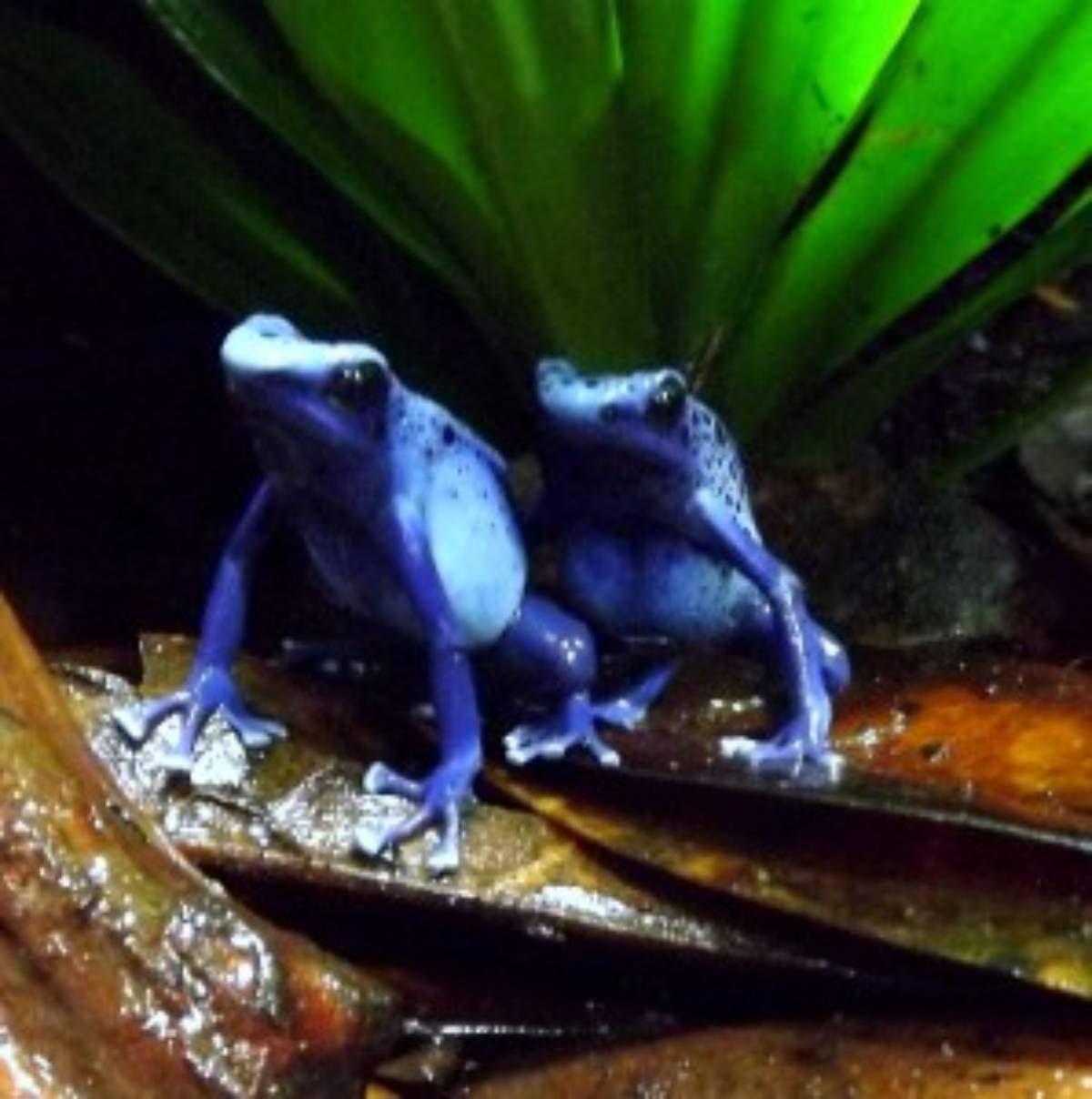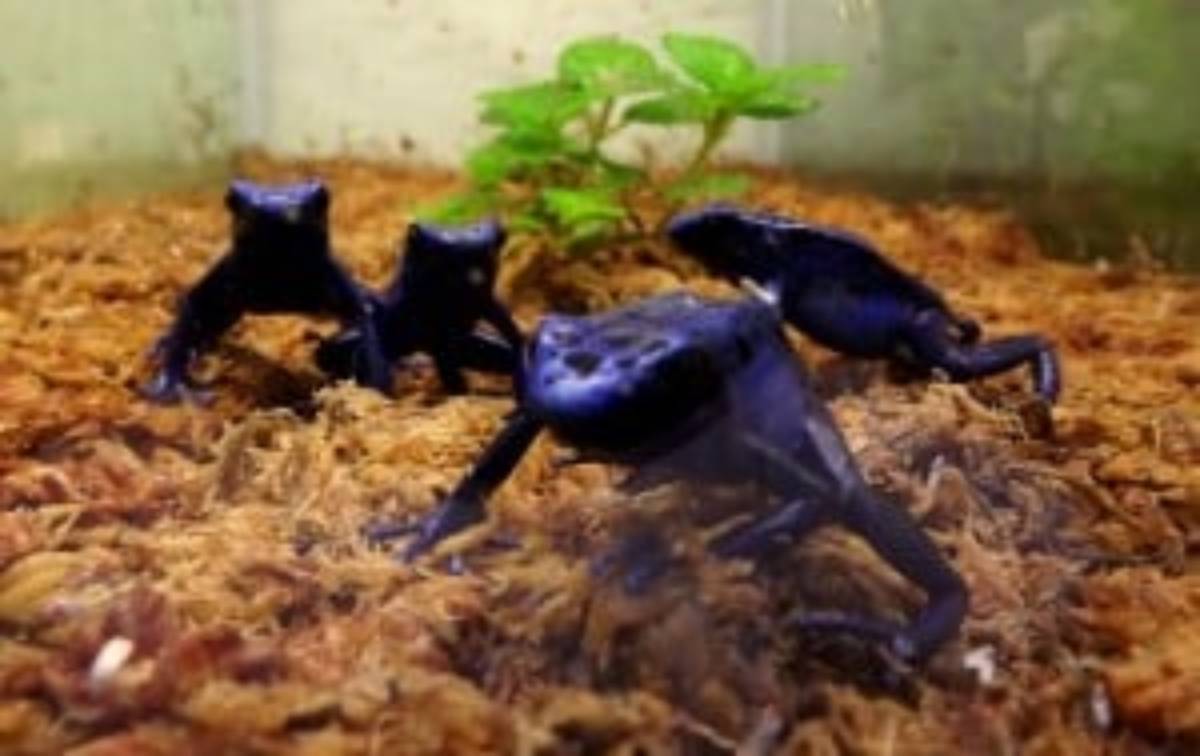Josh's Frogs
Keeping Dart Frogs in Groups
What's better than one dart frog? More than one dart frog! Dart frogs can be surprisingly aggressive towards one another, but there are ways to work around that aggression and house several in one vivarium - as long as a few rules are followed.

Provide plenty of visual barriers
You don't want your frogs staring down each other all day. Even if they don't fight outright, the constant presence of another frog may stress one animal until it stops eating. Utilizing dense plantings, plants with broad leaves, wood, leaf litter and the like to provide plenty of places frogs can get out of sight.Feed, Feed, Feed
You're not yourself when you're hungry, and neither are your frogs! Frogs will fight over limited resources. To ensure your frogs are not acting out over lack of food, try the following:- Feeding heavily
- providing multiple feeding stations (a piece of banana works great)
- spreading out fruit flies
- seeding with plenty of springtails
Raise frogs together
By introducing all frogs to the vivarium at the same time when they're young, they'll have to learn to live with each other as they grow. Raising frogs together in a group can also delay breeding activity, which will allow them to continue to expend energy on growth instead of egg production, resulting in larger adults and better breeders in the long run.Watch your sex ratios
In general, females without ready access to a male are trouble. Whenever possible, keep your male:female ratio 1:1 or male heavy. I know most keepers will purchase young froglets (long before they're old enough to sex), so make sure you keep an eye out for aggression as your animals grow.Observe and Act
I've had groups of dart frogs that lived harmoniously for years before suddenly, for seemingly no reason, decided they didn't care to live together anymore. As pet owners, we must always keep an eye on our pets and make sure they're doing well. Make sure you're taking time while feeding, cleaning glass, etc., to observe your animals and make sure they're eating and staying at a healthy body weight. Be ready to remove an animal if it isn't doing well - a simple 10 gallon tank makes a great 'home away from home' for an outcast, where it can gain weight and possibly be reintroduced into the group at a later date.
Topics in this Blog
None
